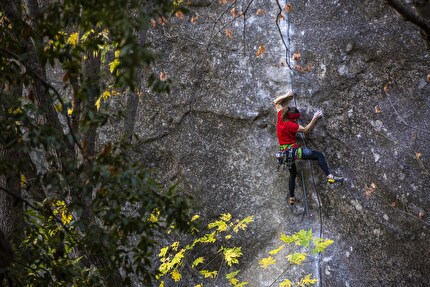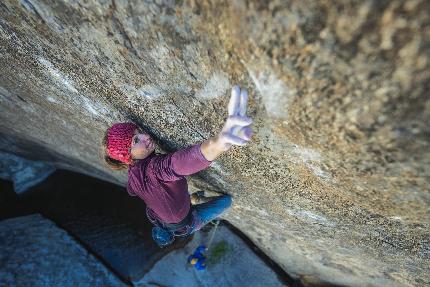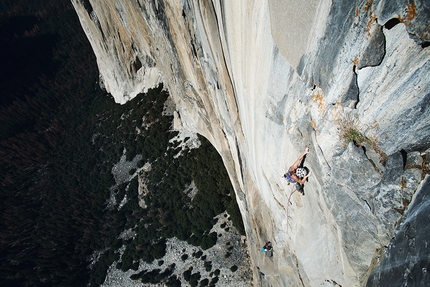It goes again, boys! Barbara Zangerl interview after Freerider flash on El Cap
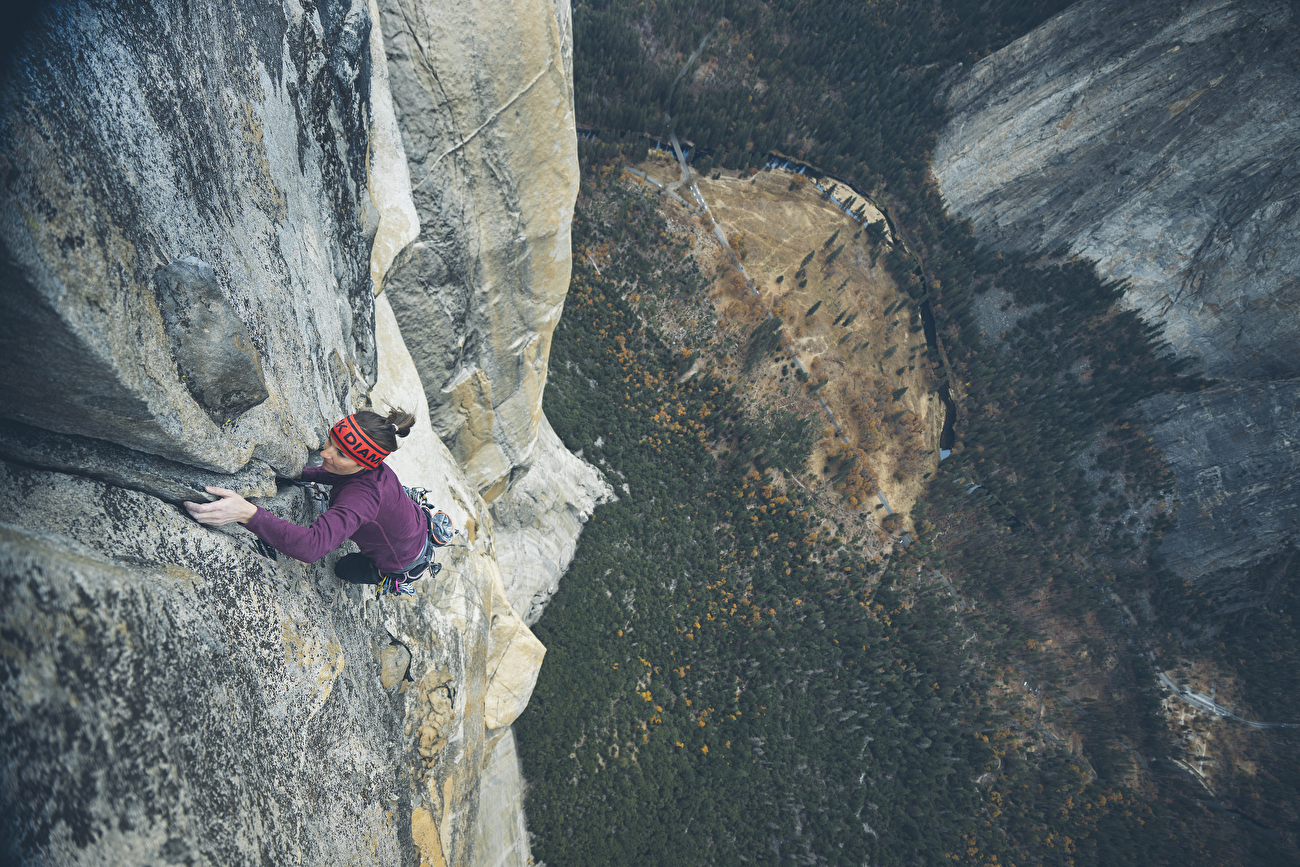
 1 / 24
1 / 24 Miya Tsudome / Highpoint Productions
Miya Tsudome / Highpoint Productions
As reported, Austria's Barbara Zangerl has successfully completed a remarkable flash ascent of Freerider, the 1000m big wall on El Capitan in Yosemite established in 1995 by Alexander Huber, freed in 1998 with his brother Thomas Huber, and rendered world-famous by Alex Honnold's audacious free solo in June 2017. 36-year-old Zangerl has ushered in a new level with her no-falls ascent, while her climbing partner Jacopo Larcher narrowly missed the flash after just one fall on the crux on the crux of the Huber Pitch, aka as the Boulder Problem Pitch
An ascent of this magnitude has been in the making for a while and attempts to onsight or flash an El Capitan big wall date back to the late 1990's. In 1997 Japan's Yuji Hirayama set the bar astoundingly high with his 3-falls ascent of the Salathé Wall, while in 2012 Britain's Leo Houlding missed becoming the first person to lead every pitch of an El Cap route onsight after taking just one fall on Freerider. In 2014 his compatriot Pete Whittaker made a remarkable ascent of the same route, falling once on the Boulder Problem Pitch before abseiling back down to the belay and promptly sending the Teflon Corner variation first go; this ascent with Tom Randall was carried out after climbing to the Heart Ledges, rappeling to the ground for logistical reasons, and subsequently returning to their highpoint. In 2022 František Bulička from the Czech Republic flashed the Boulder problem, only to make a heartbreaking slip on the last hard move of the Enduro Corner. Others who have got superbly close in the past on Freerider include Nicolas Favresse and Siebe Vanhee, while Tommy Caldwell and Ueli Steck on Golden Gate and Seb Berthe on El Niño are all standout, fast and free ascents.
Zangerl has a climbing resumé like few others, in particular in Yosemite where over the last decade she has repeated the big walls El Niño (2015), Zodiac (2016), Magic Mushroom (2017), Pre-Muir Wall (2019) and The Nose (2019). A few weeks ago she repeated one of the valley's hardest thin cracks Magic Line, while last autumn she repeated another single pitch testpiece, Meltdown. All superlative achievements, but Freerider is arguably one step further still.
Babsi: wow! What can we say?
Thanks! I think the first thing I want to say is that I was really, really lucky! There were hardly any other climbers on the route, the weather forecast had been bad but in the end it held up, conditions were actually very good and as we climbed upwards everything just seemed to slot into place.
And the second thing you want to say?
Is that Jacopo was really unlucky. He was so, so close to flashing the entire route! He led the Boulder Problem pitch before me and didn't see the undercling hold properly and as a result fell on the famous karate kick move. He then quickly redpointed the pitch second go and didn't make any other falls. Thanks to him that I had way more information about the crux and somehow I managed to stick the moves. I still haven't quite understood how I didn't fall there.
Let's start from the beginning Babsi. How did this ascent come about? You've been coming here for the last decade, so presumably you didn't roll up in the valley this season and suddenly decide "Hey, let's try and flash Freerider?"
Well, we hadn't consciously saved Freerider for a flash attempt, things just turned out this way. In the past we've climbed routes in the center and on the right wall of El Cap, never the routes on the left such as Golden Gate, Salathé and Freerider, because we've always been so afraid of the Monster Offwidth. We've heard so many stories about it that we've steered clear of this part of the wall. After our free ascent of The Nose, our friend and former Black Diamond employee Kolin Powick suggested we should try to flash Freerider. To be honest we didn't think about it too much, simply because the idea seemed to impossibile, but having said that, when Lara Neumeier and I climbed El Corazon in November 2023, we chose the Muir Blast start and not the Freeblast start, in order not to climb any pitches of Freerider.
You and Jacopo both did The Nose in 2019. So it's been in the back of your mind for five years more or less?
I suppose so, but as I said, the idea of a successful flash ascent seemed unrealistic. This season our aim was to see how far we could get. Perhaps we wouldn't even get very far at all. That's the problem with El Capitan: even the pitches which on paper look easy, are never easy! Actually, there's nothing easy on El Cap!
You mentioned the infamous Monster Offwidth
Yes. After climbing Magic Line we both realised that if we wanted to stand a chance of climbing this pitch, we'd have to train specifically for it. So we spent 4 days doing just offwidths. Generator Crack, Twilight Zone, others as well, until we started to feel a bit more comfortable at this style of climbing.
And how did it go?
(laughs) It was a real battle! The pitch is 60m long and after about 40 meters I started getting cramps and ran out of breath! I thought I'd fall but then I remembered what Alex Honnold had told us: if the going got tough, he suggested, I should lean out so the left leg could get stuck and I could rest a little. And that's precisely what I did! Thank god we'd met him by chance in a cafe a few days earlier!
Tell us about the progression and style of ascent? Did you swing leads on the easy pitches and both lead the harder ones, as you have done in the past.
Yes, more or less. On day 1 we swung leads and climbed the Freeblast slabs past the Heart Ledges to the pitch below the Hollow Flake, where we made our first bivy. On day 2 we pushed on past the Monster Offwidth to the El Cap Spire, climbed another two pitches, fixed ropes and returned to the spire for the second bivy. On day 3 we jumared up the two pitches we'd climbed the day before, pushed on to the Round Table, climbed and fixed 1 more pitch before spending our 3rd night on the wall, then on day 4 we jumared that 1 pitch and climbed the last 3 pitches to the summit. Our deal was that I would lead the Monster Offwidth and Jacopo would go first on the crux Boulder pitch, which I also led right after him. We'd swing leads on all the rest. During our climb we were joined by Eric Bissel and Miya who filmed our ascent, and by Wilson who rigged their ropes.
You talked about the Boulder pitch - or Huber Pitch - at the start of our conversation. How was that?
Well as I said, I really do feel as if I got lucky. I tried it after Jacopo, because before starting up Freerider, we'd decided to do it like this. I would lead the Monster Offwidth first, he would lead the Boulder pitch first. Sadly he didn't get the undercling properly, there's a small hole which you can't see and is really important to set you up properly for the karate kick, and I benefitted from his beta. But before that move I ran into trouble, Jacopo’s beta didn’t work for me… I couldn’t reach out to the sloper standing on the footholds he used. So I had to climb back, shake out and then try again. This time I used a closer, higher foothold and I only just managed to reach the big slopey hold, very dynamically. I reached the karate kick move very pumped and risked absolutely everything to do that kick and somehow I stuck it. I really didn't expect to do the karate kick and actually as I did the move, my left hand slipped off the hold just as my right foot hit the corner… miraculously I stayed put!
After the Boulder Pitch, how did you feel? Did you think you had the route in the bag?
I felt nervous! And no, I certainly didn't feel as if it was all over, on the contrary. The first section up Freeblast had already been stressful, and now somehow we were on course to the summit. But the famous Enduro Corner still lay above us, and that proved really pumpy. And we knew from experience that even the easy pitches can be really demanding. We really had to fight all the way to the summit!
You said we
I view this, like all of the other climbs I've done with Jacopo, as a successful team ascent. Without him nothing would have been possibile and I'm infinitely grateful to him that we managed to pull it off.
You labelled this is a flash ascent
Yes. Although we hadn't climbed any of the 30 pitches before, and onsighted many of them, we nevertheless knew a lot about the route before setting off. We know many climbers who have repeated the route before us and so we tried to find out as much as possibile from them, and of course we'd seen some stuff on youtube before. And we went to the cinema to watch Free Solo when that came out. So there's no way we could define our ascent as an onsight.
You chose to climb at the end of November
Our time in the valley was running out and we felt like it was now or never. Snow was forecast for Wednesday and Thursday, but we decided to set off on Tuesday anyways and see how things go. This tactic worked in our favour, because in the end it never snowed and was always overcast, so conditions were good. Plus there was hardly anyone else on the route, probably because of that forecast. Two weeks ago the route was packed and we certainly wouldn't have succeeded. And the decision to give a go in what felt like sub-optimal conditions made things less tense; expectations were lower, we felt less under pressure.
What was it like topping out?
When we got to the summit it felt unreal. I was happy for me, and at the same time sad for Jacopo. Climbing onsight or flash is like this, you only get one chance, and on a 1000m big wall this can feel even more brutal. But Jacopo took it in his stride and his unwavering, 100% support all the way to the top was fundamental. It's a true testament of his character, and as I said before, I can't thank him enough.
Out of interest, why did you choose the Boulder pitch and not the Teflon variation, which has an easier grade? It also happens to be the option that Honnold chose during his free solo.
Because this was the line that the Hubers originally climbed during the first ascent in 1995, and first free ascent in 1998.
Lynn Hill famously said "it goes, boys". Now you could say "it goes again, boys!"
There is no way you can compare my achievement with that of Lynn. She was an absolute forerunner. She was the first to free The Nose. A year later she then climbed it again in just a single day. And The Nose wasn't repeated for another 15 years. She was so way ahead of her time, it's difficult to comprehend.
Nevertheless yours is a historic achievement. How do you feel now?
Well if I'm honest I have to admit that I am a bit proud of what I achieved up there, I still haven't got my head round it. For 30 pitches I really had to give it 100% not to mess things up. It was certainly the biggest mental challenge I've ever faced in my climbing career.
Zangerl is sponsored by Black Diamond, La Sportiva, Vibram, Coros and Friction Labs.



 Copia link
Copia link

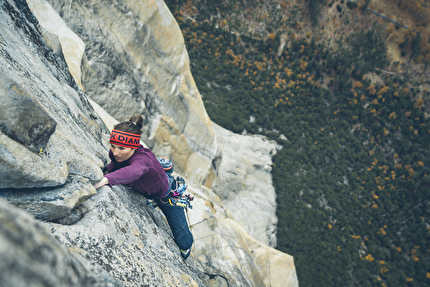
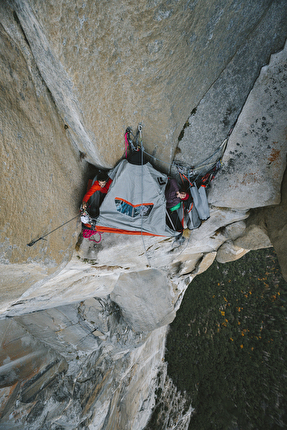


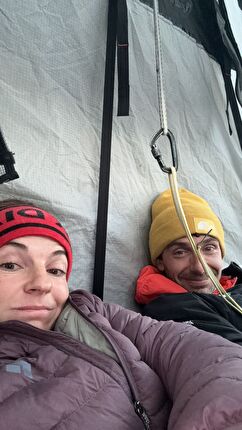
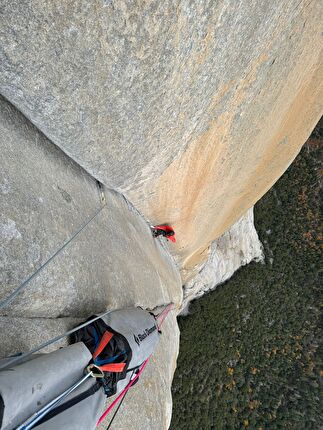
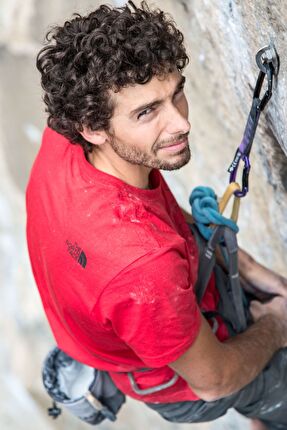
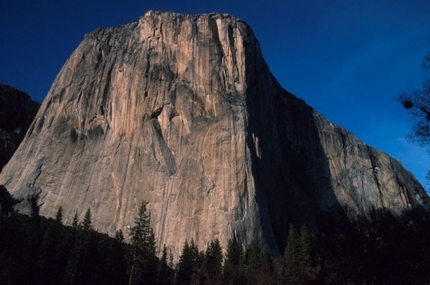
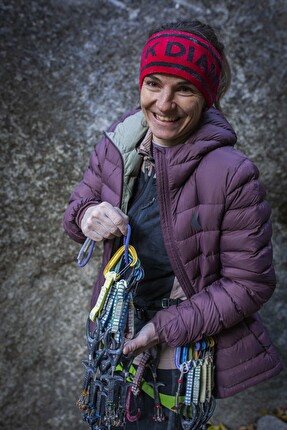
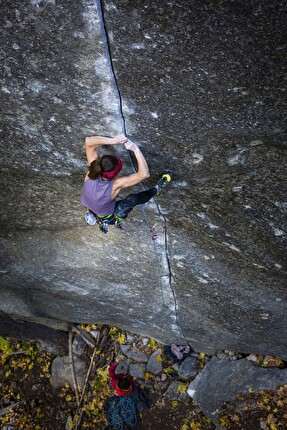
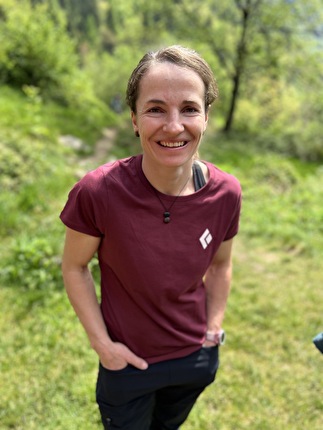

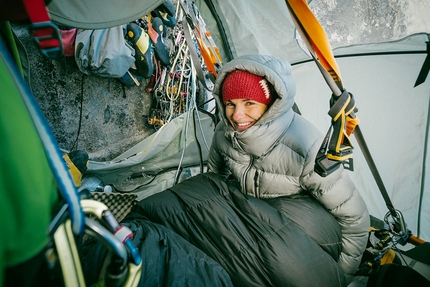
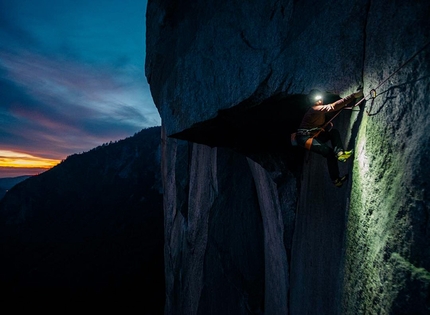
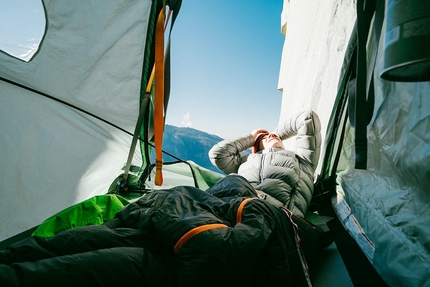
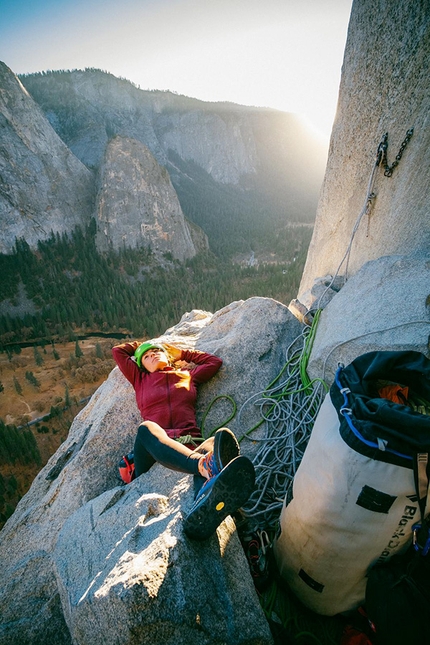
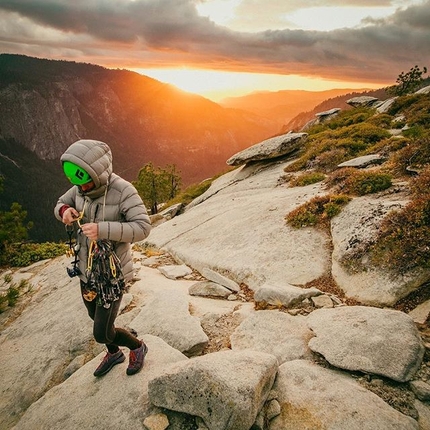
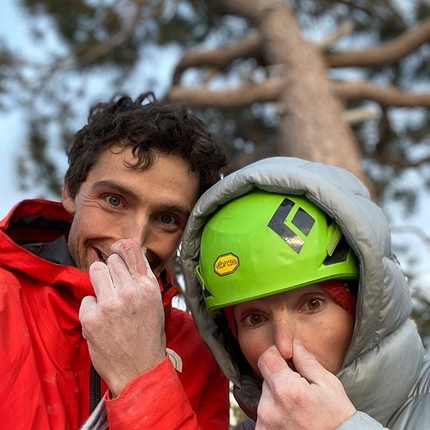
 See all photos
See all photos